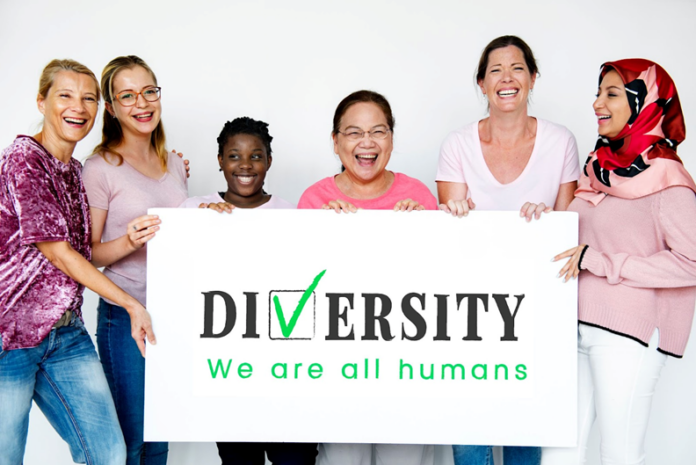What does “DEI” Stand For?
The initials “DEI” stand for “Diversity, Equity and Inclusion.” These are not just buzzwords. It has been called a movement, but it is more than that. It is a philosophy that attempts to construct a harmonious, innovative and thriving society regardless of age, race, creed or sexual preference. With its origins that rooted itself in the 1960s during the civil rights movement, today it is a concept that weaves the idea of embracing our differences and to not forsake the fair treatment of others thereby building a foundation for a society where everyone feels valued.
In 1968, at a time when cigarette smoking was not frowned upon, Phillip Morris ran an ad for its cigarette brand, Virginia Slims with the tagline “You’ve come a long way, baby!” Yes, this ad was targeted at women, however, there are groups who suffered some of the same limits as women have throughout history.
This post will delve into what DEI is today, it’s origins and what the journey women took on their way to the workplace looked like over the years.
Timeline of Women’s Rights
US News and World Report’s article entitled “Timeline: The Women’s Rights Movement in the U.S.” is rife with detailed information going back to 1769 when the colonies adopted the English system of denying women the right to own property in their name or to keep any of their earnings, to the reversal of “Roe v Wade,” auguring a frightful return to 18th century patriarchal systems of restrictions and control.
Some positive highlights from this timeline include the following:
- In 1809 Mary Kies received a patent for weaving silk with straw. She was the first woman to ever receive a patent.
- Thirty years later, in 1839 when Mississippi became the first state to allow women to own property in their own name — with one caveat — they must obtain permission from their husbands.
- In 1872, the National Radical Reformers nominated Victoria Claflin Woodhull for president. She was the first female candidate for the top job in the US. At the time, female federal employees were guaranteed equal pay for equal work, but this right was not extended to private sector employees.
- Married women were granted the right to purchase and own property in their own name as well as keep any wages they have earned in 1900.
- Thirty years after that, “The National Recovery Act” disallowed more than one member of the family from holding a government job. This caused many women to lose their jobs.
- Then in 1963, “The Equal Pay Act” is passed, which, once again promises equal pay for all, for the same work — with the added wording “regardless of the race, color, religion, national origin or sex of the worker.”
And that’s just through the middle of the 20th century. Many may see a pattern of something major happening every thirty years or so in the realm of DEI.
Pros and Cons Surrounding DEI Programs
Just like everything else in life, pros and cons are everywhere. Let’s look at some positive points that support DEI programs and the some of the conflicting ideas around them.
Positives:
- Enhancement of innovation and creativity by diverse teams with various experiences and perspectives for use in problem-solving.
- Companies with diverse workforces perform much better financially because inclusion encourages a feeling of belonging. A feeling of belonging increases employee productivity.
- Diverse groups will consider wider ranges of perspectives which will encourage a more detailed and worthy decision-making process.
- DEI programs build more inclusive and positive workplaces which reduces turnover because employees are happier.
- Everyone has a social responsibility to contribute to broader social justice goals and limit social inequalities.
Challenges:
- DEI programs require resources, commitment and careful planning. If a DEI program is poorly implemented, it will not be supported.
- Arguments have been made that DEI programs can unwittingly encourage reverse discrimination.
- Some organizations may find the cost and the attainment of other resources extremely demanding.
- It is believed that without the sustainability of commitment and true cultural change, these programs may have limited long-term impact.
- There is resistance to change from groups or people who are simply uncomfortable with change and prefer the status quo. This kind of thinking blocks the effectiveness of DEI programs.
The Promise of DEI Programs
The promise of DEI programs stems from the idea that we should all endeavor to embrace our differences, to treat each other fairly and that we learn to consciously create environments where all present feel included and have value.
Imagine a world where everyone’s voice is heard, a world where different perspectives pave the way for groundbreaking ideas and solutions to problems. That is the promise of DEI!
More and more companies are recognizing the need for and implementing DEI programs as a result of accepting that programs such as this engender creativity which helps create solution-oriented ideas. Schools and communities all around are also accepting the DEI principle of working together to bridge gaps that will bring together a diverse group of people to create and nurture more inclusive connections.
What do you think? Do you think embracing DEI is the right thing to do? Or do you believe things don’t change? Maybe you believe that the more things change, the more they stay the same?
It is definitely worth the trouble and time it takes to explore how these ideals shape a brighter, more inclusive future for us all!


